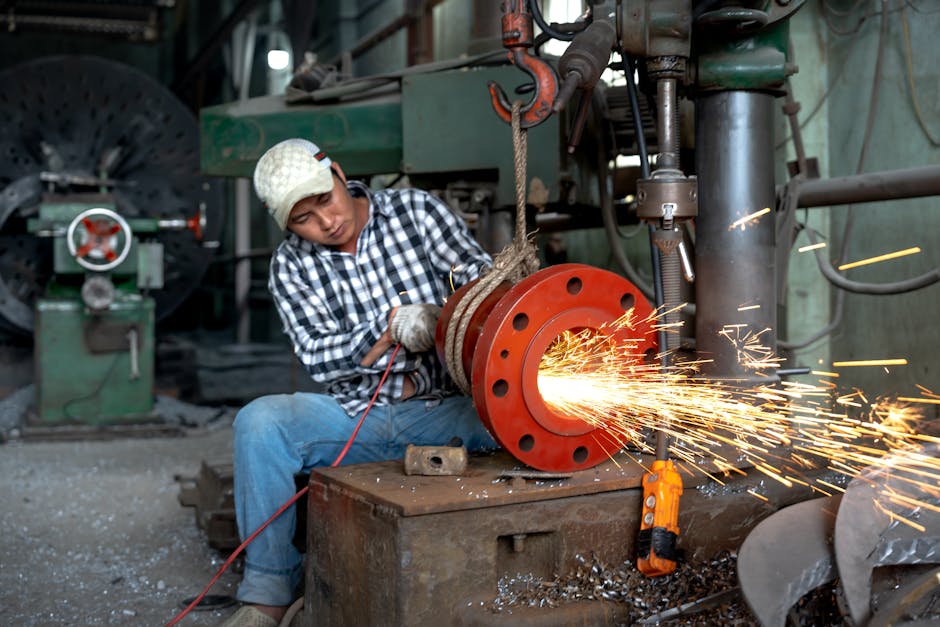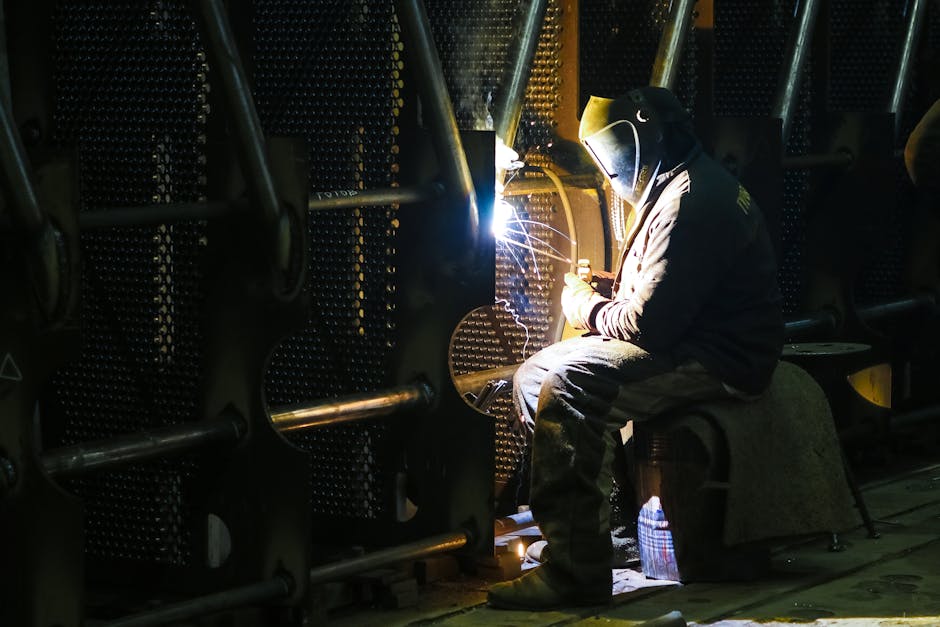Skill Test for Maintenance
Modern manufacturing demands highly skilled maintenance technicians. These professionals ensure operational continuity and equipment reliability. However, identifying truly qualified candidates remains a significant challenge. A well-structured skill test for maintenance technician in Manufacturing provides the solution. Additionally, it offers a data-driven hiring approach. Furthermore, it reduces costly mis-hires and downtime. This guide explores effective assessment strategies for industrial maintenance roles.
Understanding Skill Test for Maintenance
A maintenance technician skill assessment evaluates practical and theoretical knowledge. It measures competency across multiple technical domains. Therefore, it predicts on-the-job performance accurately. These evaluations often combine written questions with hands-on tasks. For example, candidates might troubleshoot electrical circuits or interpret mechanical drawings. This dual approach provides a comprehensive skill snapshot. It reveals both knowledge depth and practical application ability.
Manufacturing environments require specific technical proficiencies. These include PLC troubleshooting, pneumatics, and mechanical systems comprehension. A proper evaluation mirrors real-world shop floor challenges. Consequently, it identifies candidates who can perform under pressure. It also highlights safety consciousness and procedural adherence. These traits are critical for preventing accidents and ensuring quality work.
Skill Test for Maintenance Benefits
Implementing a standardized assessment offers substantial organizational advantages. First, it significantly improves hiring quality. Employers gain objective data beyond interview impressions. This reduces unconscious bias in recruitment decisions. Moreover, it leads to better job fit and higher employee retention. Technicians hired through validated testing typically stay longer and perform better.
Secondly, it directly impacts operational efficiency. Skilled technicians minimize unplanned equipment failures. They also execute repairs more quickly and correctly. Therefore, overall equipment effectiveness (OEE) improves substantially. Production lines experience less disruption and higher output quality. This creates a positive ripple effect throughout the manufacturing operation. For ongoing development, explore our professional resources.
How Skill Test for Maintenance Works
Effective maintenance assessments follow a structured multi-stage process. Typically, it begins with a written knowledge examination. This section covers fundamental principles and safety protocols. It aligns with International Labour Organization guidelines for workplace competency. Next, candidates proceed to practical skill demonstrations. These simulate common maintenance scenarios they will encounter daily.
The practical component often uses actual equipment or training simulators. Candidates might diagnose a faulty motor starter or replace a hydraulic seal. Meanwhile, evaluators score performance based on predefined rubrics. These rubrics assess technical accuracy, speed, and safety compliance. Additionally, problem-solving approach and tool usage are critical evaluation factors. This method ensures consistent and fair candidate comparison.
Best Skill Test for Maintenance Practices
Developing an effective technician evaluation requires strategic planning. First, clearly define the core competencies for your specific manufacturing environment. Consider the equipment technologies and maintenance philosophies used. Furthermore, involve current high-performing technicians in test design. Their practical insights ensure relevance and appropriate difficulty levels.
Secondly, balance theoretical knowledge with hands-on application. The written portion should cover electrical systems, mechanical principles, and blueprints. Meanwhile, the practical section must reflect real troubleshooting tasks. For instance, include PLC program reading or bearing replacement exercises. This combination thoroughly assesses both cognitive and motor skills. It also aligns with U.S. Department of Commerce trade information on workforce readiness.
Skill Test for Maintenance Implementation
Successful integration into hiring processes requires careful execution. Begin by piloting the assessment with current employees. This validates the test’s ability to distinguish skill levels. Additionally, it helps refine timing and instruction clarity. Then, train hiring managers on consistent administration and scoring. Standardization prevents subjective interpretation of results.
Next, establish clear pass/fail criteria or proficiency bands. These should correlate with job performance expectations. Furthermore, ensure compliance with all local employment regulations. This is particularly important in regions with strict labor laws like the UAE. Always reference UAE government employment regulations during design. Finally, schedule regular test reviews to maintain technical relevance as equipment evolves.
Advanced Skill Test for Maintenance Strategies
Progressive organizations enhance basic assessments with advanced methodologies. Incorporating virtual reality (VR) simulations represents a cutting-edge approach. VR can recreate complex or hazardous troubleshooting scenarios safely. Moreover, it provides detailed performance analytics unavailable in physical testing. These analytics track decision paths and tool selection efficiency.
Another strategy involves continuous skill mapping. Rather than one-time pre-employment testing, implement periodic reassessments. This identifies skill gaps in existing teams for targeted training. Consequently, it supports workforce development and succession planning. Additionally, it helps organizations adapt to new technologies like Industrial IoT and automation. These advancements require updated maintenance competencies.
Skill Test for Maintenance Success Tips
Maximize assessment effectiveness with several proven techniques. First, always contextualize test components within your specific manufacturing processes. Generic tests often miss critical job-specific competencies. Secondly, maintain strict assessment security to preserve test integrity. Rotate questions and practical stations regularly to prevent content sharing.
Furthermore, provide constructive feedback to all candidates. Even unsuccessful applicants appreciate understanding their development areas. This enhances your employer brand and creates future talent pipelines. Additionally, correlate test scores with subsequent job performance data. This validation ensures your evaluation truly predicts workplace success. For personalized assistance, consider an expert consultation.
Future of Skill Test for Maintenance
Maintenance technician assessments will continue evolving with industry trends. Artificial intelligence will play a larger role in adaptive testing. AI algorithms can customize question difficulty based on previous answers. This provides more precise skill level measurement. Furthermore, augmented reality (AR) may guide practical components. AR overlays could provide schematic diagrams during equipment disassembly tasks.
Another emerging trend involves micro-credentialing. Technicians might earn digital badges for specific competency validations. These badges create portable career credentials recognized across employers. Moreover, increased focus on World Health Organization workplace standards will influence test content. Ergonomics and mental health awareness will join traditional technical skills. This holistic approach builds healthier, more sustainable workforces.
Frequently Asked Questions
What topics should a maintenance technician skill test cover?
A comprehensive assessment should cover electrical systems, mechanical components, PLC basics, hydraulic/pneumatic systems, safety protocols, and blueprint reading. Additionally, it should include troubleshooting scenarios relevant to your specific manufacturing environment.
How long should a typical maintenance skill assessment take?
Most effective evaluations require 2-4 hours total. This allows sufficient time for both written knowledge testing and hands-on practical demonstrations without causing candidate fatigue. The exact duration depends on the position’s complexity and seniority level.
Can we use existing employees to validate our skill test?
Yes, pilot testing with current technicians is highly recommended. High performers should achieve high scores, while those needing development should show corresponding gaps. This validation ensures your assessment accurately measures job-relevant capabilities.
How often should we update our maintenance technician assessments?
Review and update assessments annually or whenever significant equipment/technology changes occur. Regular updates ensure tests remain relevant and continue to accurately predict job performance in your evolving manufacturing environment.
Are there legal considerations for maintenance skill testing?
Yes, assessments must comply with employment laws regarding discrimination and reasonable accommodation. Ensure tests measure bona fide job requirements and don’t disproportionately exclude protected groups. Consult legal experts for compliance assurance.
What’s the ROI of implementing maintenance technician skill testing?
Organizations typically see reduced downtime, lower training costs, decreased turnover, and improved safety records. These benefits substantially outweigh implementation costs, especially when considering World Bank economic reports on productivity losses from unskilled labor.
Conclusion
A properly designed skill test for maintenance technician delivers immense organizational value. It transforms hiring from subjective judgment to objective measurement. Furthermore, it builds a more capable and reliable maintenance workforce. This directly enhances manufacturing productivity and product quality. Additionally, it creates safer work environments through validated competency verification.
Implementing these assessments requires initial investment but yields long-term dividends. The strategies outlined provide a roadmap for development and execution. Therefore, begin designing your customized evaluation today. Start by schedule appointment with our specialists. Transform your maintenance team into a competitive advantage through strategic skill validation.




